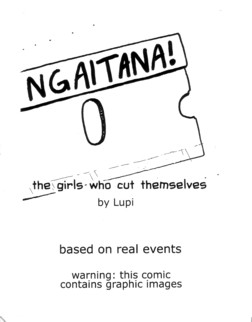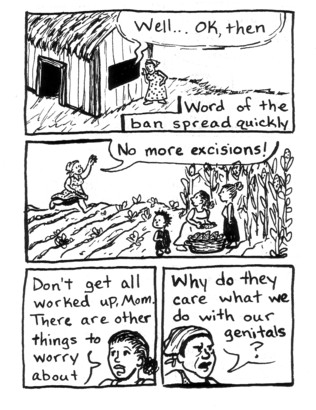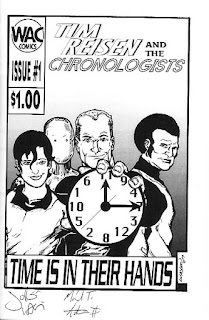Monday, November 24, 2008
SALT N PEPPA


zine, [zeen] noun. 1. abbr. of fanzine; 2. any amateurly-published periodical. Oxford Reference




Catnap #2
12 Pages, chapbook
Free in North America
Ryan and Ryan’s girl put together this friendly and engaging, albeit brief, zine. One vegan pizza recipe, one story with illustrations, bits of misc art, several verses of poetry, boobs, pregnant Hispanic, etc. Free in the US & Canada, $2 elsewhere.
Catnap
260 Molino Ave #A
Long Beach CA 90803
catnapzine@gmail.com
myspace.com/catnapzine
 So…Buttons is seven stories over twenty-four pages. Jonathan Baylis enlists artists T.J. Kirsch, Mr. Alan, and David Beyer Jr. to illustrate his slice of life vignettes.
So…Buttons is seven stories over twenty-four pages. Jonathan Baylis enlists artists T.J. Kirsch, Mr. Alan, and David Beyer Jr. to illustrate his slice of life vignettes. T.J. Kirsch works in color in So… Buttons. Each of his three sections is in a glossy color similar to the cover. His work is probably the most immediately appealing, especially in "So… I'm Dating a Comic." Here his angular and attractive art dances against a changing color palette.
T.J. Kirsch works in color in So… Buttons. Each of his three sections is in a glossy color similar to the cover. His work is probably the most immediately appealing, especially in "So… I'm Dating a Comic." Here his angular and attractive art dances against a changing color palette.  Jonathan's stories feel comfortable and immediate. There's nothing here that will amaze or challenge the reader, but you'll feel like you know him and his characters. You recognize yourself and your friends in these tales, which makes it easy to recommend So… Buttons.
Jonathan's stories feel comfortable and immediate. There's nothing here that will amaze or challenge the reader, but you'll feel like you know him and his characters. You recognize yourself and your friends in these tales, which makes it easy to recommend So… Buttons. 
Ngaitana!
Female genital mutilation! That's the nature of the random review grab pile I have on my desk, folks. Granted, I would have liked to have come back to reviewing after an exhausting election season and had something lighthearted and cheery, but the power of the random grab compels me. This was originally attempted as a 24 hour comic and Lupi says that it ended up being more like 48 hours. That's fine, it probably looks a lot better this way. This is historical fiction, taking place in Kenya in 1956 after the Brits attempt to ban female genital mutilation. Crazy, I know, but this story is mostly about the young women of the time having a hard time accepting that fact and eventually doing the mutilating themselves. Who's right and who's wrong here isn't discussed, as this does an excellent job of staying a fairly straightforward piece of historical fiction. One note for the especially squeamish: that cover talks about graphic images but it's really only a graphic image, that of a razor being held up to a vagina. I still don't know exactly what gets cut during the mutilation process (although I can infer from the image in here) and, frankly, I'm good without that particular piece of information lodged in my brain. This whole comic is up at Lupi's website at the moment, along with other comics that (I'm only guessing here) have nothing to do with genital mutilation. All told it's a fascinating story and I appreciate the ambiguity, especially with something that damned near every thinking human being has long ago disregarded as an absurd and horrific practice. No price, but let's say $2.

 I'm currently reading The Pixar Touch: The Making of a Company. I guess that is an unusual way to start a small press review but it will make more sense when you read on.
I'm currently reading The Pixar Touch: The Making of a Company. I guess that is an unusual way to start a small press review but it will make more sense when you read on. I actually asked Justin if Steve was "one of those people on the televisions". Luckily, he couldn't reach through the instant messanger to slap me.
I actually asked Justin if Steve was "one of those people on the televisions". Luckily, he couldn't reach through the instant messanger to slap me.Common themes, of course, can be recognized across the backcatalog of any established artist. In some ways, however, such signposts feel all the more prominent in Charles Burns' work. The artist has maintained a powerful sense of stylistic consistency across his output—both in terms of his approach to aesthetics and storytelling—that lesser artist find difficult to maintain over the course of a single story.
In this third and final part of our interview with Burns, we discuss the influences—both conscious and otherwise—on his singular artistic vision and how they influenced both his most famous book, Black Hole, and his more recent venture into the world of film, Peur(s) du Noir—a dark and haunting work that fits in perfectly alongside his better-known work.
Black Hole had a lot of single panel images that worked on their own.
Yeah.
Do you work from the images?
You know, it goes both ways. Primarily I'd say that my storytelling comes from writing, but sometimes there's this really strong, iconic image, and the ideas are based around that. If you think about Black Hole, if you don't have the woods, the story has a very different feeling to it. This environment, the way that it's drawn, is very important to the storytelling.
But you're not experiencing any Jim Woodring-like visions?
I try to pay attention to my subconscious mind and my dreams, but I've never really suffered from hallucinations.
I know your father was a scientist—was that part of the genesis of the story that inspired the short film?
Someone asked me that before, and I didn't have an answer. I thought about it before, and now I do have one. You were talking about the bed that has insects in it. When I was a kid, we moved around a lot, and at some point, I had this bed. It wasn't like a regular bed—it was more like a couch.
Like a futon?
Yeah, maybe something like that, and the material inside when you sat down made kind of crackling sound. I had a strong imagination, and on evenings when I was trying to fall asleep, I would hear this crackling sound. I'm not moving, but I'm hearing this crackling sound, so of course I'm thinking there's something in there, like insects.
Is there something specific to that story that lends itself well to doing an animated film, versus a comic?
The guideline was that it had to be in black and white, and that is was about fears of the dark. It's a horror story and there was a certain length to it—between 15 and 20 minutes. This seemed like it fit. It was also just a matter that I wanted to go back to this story.
The fear of the dark is an incredibly central theme to the story.
Yeah, of course, and in every horror story, really. It was interesting too, working on it, that there were a lot of visual links between the stories. We didn't know exactly what the entire story would be, but it was interesting to see all of the similarities.
Beyond the darkness, what other themes hold the pieces together?
There's the whole fear of the physical body, which I always come back to [laughs]. There are just funny little things, like the specimen in jars.
That has to be one of the most terrifying concepts for a horror story—this idea of losing control of yourself. That played a huge role in Black Hole. It also plays a big role in the animated piece.
Yeah, absolutely. The guy wakes up and he's tied up and has a little cut on his hand.
Yeah, and Black Hole, which has the people slowly turning into monsters.
Oh yeah, right, right. With Black Hole, there are so many things I like about that idea of transformation where someone can wear their clothes and hide their affliction, whereas, if someone has it manifest itself on their face, they can't possible hide it.
And in those terms, Black Hole has its roots in very real diseases.
Sure, sure.
Did those play a role in the writing of the story?
Well, there are some things that are much more—you've got the idea of the girl that slips out of her skin. At that age, you've got the idea of wanting to transform yourself and becoming a new person. I like that idea. The extra idea—there's Burroughs again. The whole idea of the talking asshole.
From Naked Lunch.
Those sort of things played a role.
Would you work on another one of these projects, if the opportunity presented itself?
I'd be interested in working on other projects, but again, this piece was so unusual, in terms of the freedom we were allowed. And also, a major motivation was working with the other artists I admired.
–Brian Heater









 Taken from Audio Heaven blog:
Taken from Audio Heaven blog:newsround:
jim medway's new shop is online
the observer/ jonathan cape short story prize winner's up
black and white cat press have some new comics available
rob jackson's talking about the comics he bought at thought bubble
check out the reet! comics website
panel borders' dickon harris interviews a number of small pressers at handmade and bound
book a table at the web and mini comix thing before december 1st for only £30